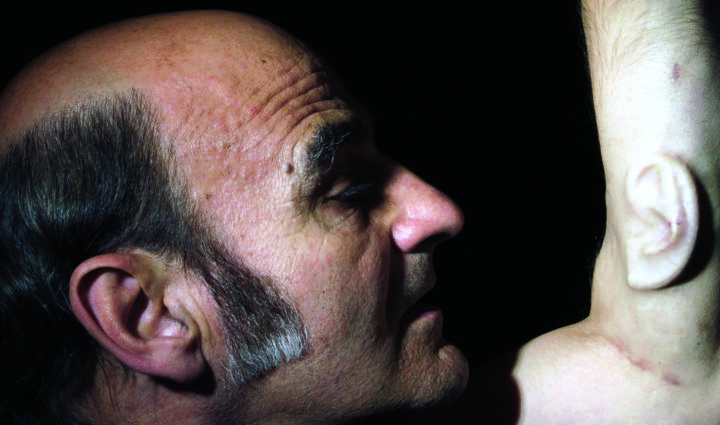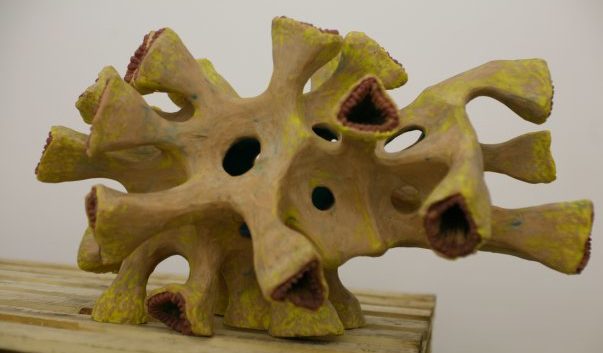Art & science in the post-bilogical age
SCIENCE MAY BE THE LAST REMAINING TABOO IN CONTEMPORARY ART…
The National Center for Contemporary Arts (Kaliningrad branch, Russia) together with LABORATORIA Art & Science Space (Moscow) present a collection of documentary films about artworks recently created using the latest twenty-first century technologies: artificial life, robotics, bio and genetic engineering.
We are thus again confronted with the questions of the relationship between art and life in a completely new context defined by biological and abiological creations, works, and beings.

Revital Cohen
LIFE SUPPORT, 2008
(Respiratory Dog)
A project to reconfigure pets into technologies that extend human life
photo: Revital Cohen
Noreen Leddy, Andrew Milmo, Ed Bringas and Melissa Gira
APHRODITE, 2006.
Shoes for sex workers equipped with a GPS terminal for querying the location with coordinates
photo: Noreen Leddy
Matthias Gommel, Martina Heitz, Jan Zappe (Germany)
BIOS (Bible), 2007
Industrial robotic calligrapher rewriting Bible stories
photo: RobotLab
This collection is the first comprehensive overview of the current stage of contemporary techno-biological art. It provides a panorama of artistic strategies for granting and withdrawing the gift of authenticity. The analysis of these strategies opens up new possibilities for creative production and cultural commentary.
The medium in these artworks is living or lifelike matter, and the properties of living organisms and technologically reproduced artefacts are combined to produce the method. Art created under these new conditions of post biology — that is, under conditions of artificially generated life — can not avoid making this artificiality its explicit theme.
SECTIONS OF THE COLLECTION:
- ARTIFICIAL BUT ACTUAL (ARTIFICIAL LIFE)
- LIMITS OF MODELING (EVOLUTIONARY DESIGN)
- SHINING PROSTHESES (ROBOTICS)
- BODY AS TECHNOLOGY (TECHNOBODY MODIFICATION)
- MORE THAN A COPY, LESS THAN NOTHINGNESS (BIO AND GENETIC ENGINEERING)
- SEMI-LIVING (TISSUE AND STEM CELLS ENGINEERING)
- P.S.: RE-CODING
Works by techno-bio-artists involve sophisticated conceptualizations of life. Having originated, as a rule, from laboratories, and often in cooperation with scientific research centres, these artworks present us with a new type of artificially organised time — a kind of time that incorporates features of the time associated with living organism and of the time that is associated with technologically reproduced artefacts. However, time, duration, and thus life itself too cannot be shown to spectators directly but only documented. The main genre of postbiological art is therefore, technical documentation, which includes drafts, commentaries and documentaries. It is precisely the point at which the documentation becomes indispensable, producing the life of the living thing as such: the documentation inscribes the existence of a particular creature in history, gives a lifespan to this existence, and gives the creature life as such — independently of whether this creature was ‘originally’ living or artificial.
In the 2009 “Evolution Haute Couture” project won The Russian National Award for Contemporary Arts “Innovation”.
Documentation:
“Evolution Haute Couture: Art and Science in the Post-Biological Age”. Edited by Dmitry Bulatov. Russian-English edition, and extensive glossary, color and black-and-white illustrations, 196 pages, catalogue + 2 DVD-ROM, KB NCCA, Kaliningrad, 2009.






